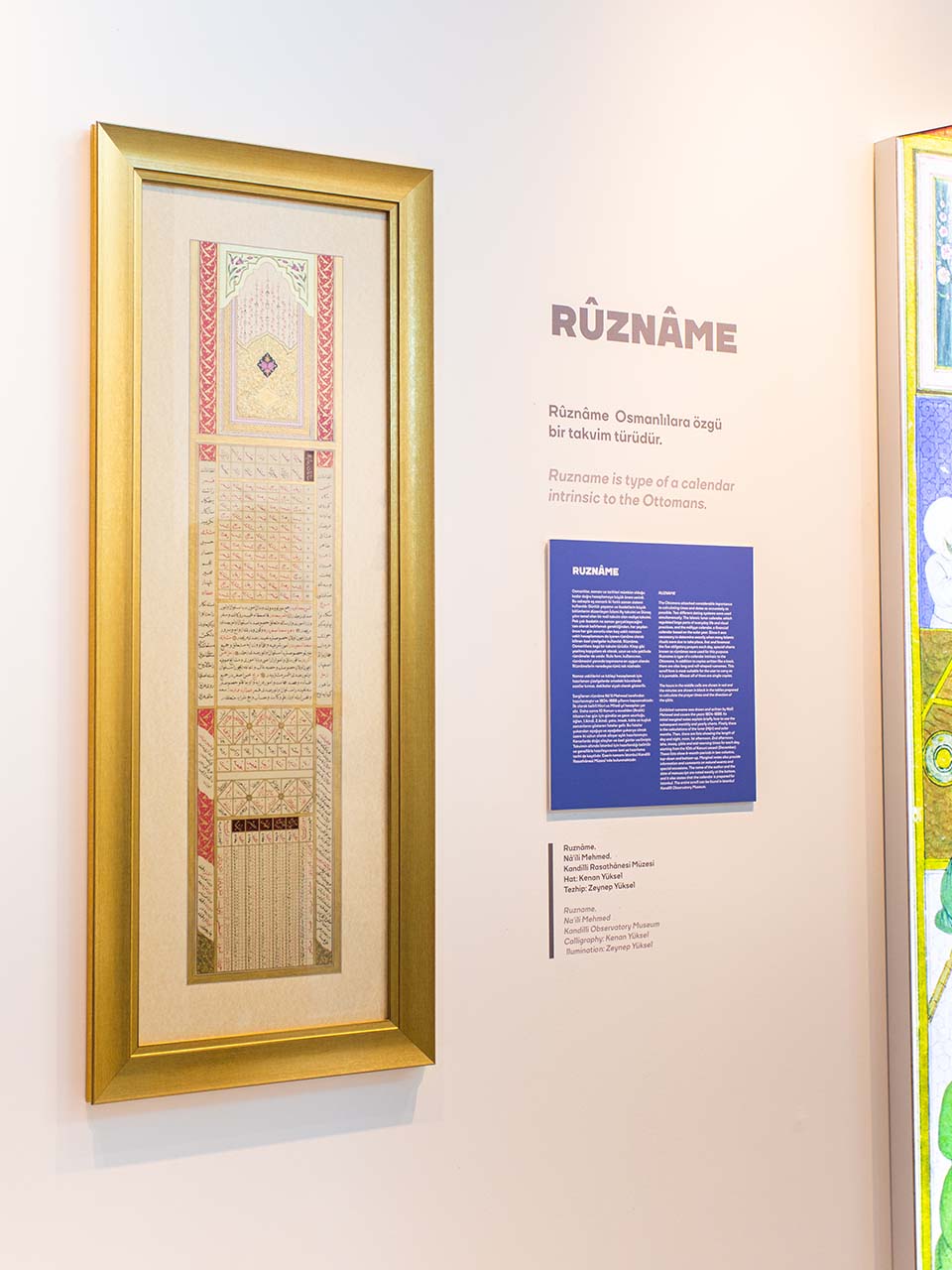With the accumulation of answers taken from Babylonian and Indian civilizations, ancient Greece and Egypt; mathematicians, astronomers and philosophers of the Islamic world have conducted original studies on this subject. Geniuses such as Abdurrahman as-Sufi, al-Bîrûnî, Bettânî, Ulug Bey, Ali Kuscu and Taqi al-Din ar-Râsıd evaluated and corrected the existing resources through observations they carried out, expanded them with innovative interpretations and calculations and made many discoveries with observation instruments they invented, in the observatories they established. For the first time in history, scientific observations began in this period and the first examples of modern observatories emerged in Islamic geography.

MURAL QUADRANT
This Mural Quadrant is located in Maragheh Observatory and is a reduced-size model of the original dial, which has a diameter of 2.5 meters. There is a movable angle ruler in the center of the dial. This fixed Mural Quadrant serves to determine the height of the Sun, the ecliptic inclination and the latitude of the observation location.

CELESTIAL SPHERE
Abd al-Rahman al-Sufi provided two drawings for each constellation, one from the outside of a celestial globe, and the other from the inside (as seen from the Earth. The celestial sphere is an imaginary globe, concentric to Earth, on which projections of constellations are found. Celestial spheres in different sizes have been utilized by astronomers throughout history.

RUZNAME
Ruzname is type of a calendar intrinsic to the Ottomans. Exhibited ruzname was drawn and written by Naili Mehmed and covers the years 1804-1888. Its initial marginal notes explain briefly how to use the subsequent monthly and yearly charts. Firstly there is the calculations of the Lunar (Hijri) and solar months. Then, there are lists showing the length of day and night, noon, 1st afternoon, 2nd afternoon, isha, imsaq, qibla and mid-morning times for each day, starting from the 10th of Kanuni awwal (December). These lists show 6-month-periods in two columns, top-down and bottom-up. Marginal notes also provide information and comments on natural events and special occasions.

ASTROLABE
The name has its origins from the Greek words ”astrolabos” or ”astrolabon” coined by the combination of the words ”astron” (star) and ”lambanein” (to take, to catch, to measure). In technical sense, an astrolabe is one of astronomical instruments, utilized for many theoretical and practical purposes such as solving global astronomy problems, measuring celestial bodies or any altitude, determining daytime and nighttime,and determining the direction of qibla according to latitude and longitude of cities. There are many types of astrolabes and these can be designed as spherical and planispheric. However, what is meant by the word astrolabe is usually the plane astrolabe, which is manufactured on the basis of the projection of the sky on a round plane.
The wooden astrolabe on the wall was produced according to the latitude of Istanbul.



